A Change in Bad Habits Leads to a Change in Life
The UF Health Douglas Williams Executive Health offers a full range of advanced diagnostic services to detect life-threatening conditions and extend life through prevention and early intervention all in one productive and efficient day. Throughout your Executive Health Physical, you will receive a full comprehensive medical exam, empowering lifestyle modification tools, all your test completed, questions answered and test results back the same day!
Each month we have shared helpful strategies to guide you towards achieving attainable goals to become a healthier version of yourself. Creating a balanced healthy lifestyle involves many small steps and changes. Making these changes and breaking bad habits is not always an easy task. The Executive Health nurse, Destiny Knopf, will share additional tips and tricks, which will assist you in achieving your ultimate wellness goal.
Everyone has bad habits they want to break, but instead of scorning yourself for being helpless to break them, use the fundamentals of forming habits to your advantage. Engaging in habit forming is key to vitality and well-being at all ages. Habits, good or bad follow a typical three-step pattern: Reminder, Routine, and Reward. By breaking down the cycle of a bad habit, you are able to identify what triggers the routine and begin to address what really needs to change.
One common reason people do not succeed in making lasting habit changes is the lack of motivation and confidence in their ability to achieve the change. Before you can focus on changing a bad habit, you need to measure both your motivation and confidence level to determine whether you are ready. By using a “Readiness to Change” ruler for a specific habit, you can rate your motivation (how important it is for you to make a change) and confidence (how confident you are that you can make it happen) on a scale from 1-10. You want a score of at least a 6 for each in order to create the foundation you need to be successful. If you don’t have this score or higher, choose another habit to change or scale back the habit change to boost your confidence. The following link is an example of a “Readiness to Change” ruler. http://library.nhsggc.org.uk/media/223700/Readiness%20Ruler.pdf
Once you have chosen the habit you want to change and measured your readiness, identify the three R’s (reminder, routine, and reward).
• Reminder: a trigger initiating the behavior
• Routine: the behavior or action you take
• Reward: the benefit from the behavior or action
Each R is linked to the others in a continuous loop. Here’s an example of how the loop works:
Ø Say you have a habit of eating junk food when you watch TV at night. Your 8pm TV show begins (reminder), you go to the kitchen to gather your snacks (routine), and then you eat them while you are watching your program (reward). When the reward is achieved – in this case, the pleasure of comforting junk food – you have the desire to repeat the action with the next reminder, and the cycle begins.
The simple solution to break the bad habit would be to stop eating junk food. Of course, this is never easy because the real issue is the habit, not the food itself.
The first step to breaking a bad habit is to understand the reminder and routine in order to shine a light on the actions you take as a result. In the example above, at 8pm you visit the kitchen for snack foods and then get comfortable on the couch. Now ask yourself, why do you go to the kitchen? Make a list of words or phrases that describe your feelings before you begin the routine. Hunger? Boredom? The desire for pleasure of eating while you watch TV?
The next step to change is to find what triggers each habit. Studies have found that habit triggers typically fit into five categories: location, time, emotional state, other people, and immediately preceding action. In our TV – watching scenario, the set triggers might look like this:
• Location: living room
• Time: 8pm
• Emotional state: bored
• Other people: none
• Immediately preceding action: favorite TV show comes on
Evaluate your own situation using these categories and make notes for three to five days, as some may vary (for instance, mood or time). Afterwards, review your notes and look for patterns. For instance, maybe you snack only when you are alone, or when you watch TV later at night, or when you are in a certain mood. Do you follow the routine of snacking when you watch certain TV shows, like a comedy or drama? Do you tend to favor certain foods, like cookies, over other choices? These are the clues to what needs to change in order to shift to a new healthier habit.
Another tip to help guide you on habit changing is to make a list of different types of rewards you also enjoy. The goal is to not punish yourself for seeking pleasure, but to choose rewards that make you feel good while investing in your new healthier habit. For example, choosing healthy snacks you love over junk food.
Once you have examined your routine, the reminder that triggers your behavior, and the reward for your habit, you can figure out which factors you can shift and thus break the cycle. Perhaps, instead of watching TV at the same time every night, use that time slot for other habits with better rewards, like exercise, reading, or participating in a hobby. If you find your snacking is triggered only when you watch TV later at night, try watching earlier the next day. If you discover that it’s not the snack food you crave, but rather the act of eating, prepare healthier snacks to satisfy that urge. It may take some time, and you may have to experiment with different rewards or triggers to find the right ones, but soon you can shift your bad habits to good ones. Once you know how to choose the habit you want to change, and break down the cycle of how habits work, you are empowered to make lasting changes.
“The truth is, you don’t break a bad habit; you replace it with a good one.”
For more information on the UF Health Douglas Williams Executive Health Program, visit www.exechealth.ufl.edu or contact us at (352) 265-8262.


